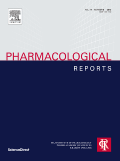
“Chronic Pancreatitis (CP) is a complex and multifactorial syndrome. Many contributing factors result in development of dysfunctional pain in a significant number of patients. Drugs developed to treat a variety of pain states fall short of providing effective analgesia for patients with chronic pancreatitis, often providing minimal to partial pain relief over time with significant side effects.
Recently, availability of selective pharmacological tools has enabled great advances in our knowledge of the role of the cannabinoid receptors in pathophysiology. In particular, cannabinoid receptor 2 (CB2) has emerged as an attractive target for management of chronic pain, as demonstrated in several studies with inflammatory and neuropathic preclinical pain models. In this study, the analgesic efficacy of a novel, highly selective CB2 receptor agonist, LY3038404 HCl, is investigated in a chronic pancreatitis pain model, induced with an alcohol/high fat (AHF) diet.
LY3038404 HCl, a potent CB2 receptor agonist, possesses tissue protective and analgesic properties without effects on higher brain function. Thus, activation of CB2 receptors is suggested as a potential therapeutic target for visceral inflammation and pain management.
The major finding of the present study is that LY3038404 HCl, a potent CB2 receptor agonist, possesses tissue protective and analgesic properties. No effects on higher brain functions were observed including the diminished fear responses induced by the alcohol diet. Thus, activation of CB2 receptors is suggested as a potential therapeutic target for pancreas protection and pain management.”
https://www.ncbi.nlm.nih.gov/pmc/articles/PMC4242547/










